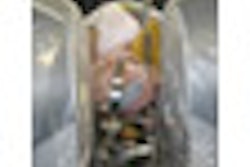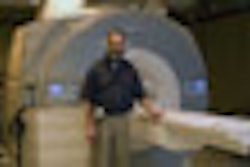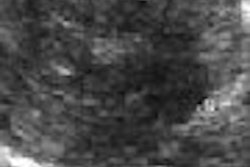CHICAGO - MR-guided focused ultrasound (MRgFUS) can successfully destroy more than 50% of fibroids with little or no pain, researchers reported at the 2008 RSNA conference in Chicago.
In a series of presentations at the meeting, Dr. Suzanne LeBlang, medical director at the University MRI & Diagnostic Imaging Centers in Boca Raton, FL, described the cases of 80 women who underwent treatment for 145 fibroids in her outpatient clinic.
"It is important for clinicians performing MR-guided focused ultrasound to spend time with patients, carefully explaining what they may feel after this treatment to minimize frightened calls from women experienced some normal cramping," LeBlang said.
"In general, this procedure is painless even when we are destroying more than 50% of the fibroids as permitted in more liberal guidelines for private practice," she said. "I have never prescribed a patient anything more than Advil for treatment of pain."
LeBlang said her patient experience indicates that the focused ultrasound ablation of "leiomyomas in an outpatient practice can yield nonperfused volume (ablation area) and shrinkage that exceed previous results from clinical trials likely due to more relaxed treatment guidelines and improved operator experience."
The average treated fibroid volume was 177 cc for the 145 treated fibroids, resulting in an average nonperfused volume of 55% immediately post-treatment. At six months, the average volume of the treated fibroids was reduced 112 cc (p < 0.0001) compared to baseline measurements.
"As prior studies have already proven the relationship between increased nonperfused volume and increased shrinkage with improved symptomology, we can expect more symptomatic relief," LeBlang said in one of three consecutive presentations at the RSNA meeting.
In a second report, she noted that some women experienced focal abdominal pain -- pain that correlated well with MR imaging that depicts abdominal fat and/or muscle necrosis.
Analysis of the treatment of five of 118 women who experience this focal pain indicates that thicker amounts of anterior subcutaneous pelvic fat appear to predispose women to these symptoms.
"This focal pain ... may last about a day," LeBlang said, and then the women have no more discomfort. However, these women also have a less successful treatment, often with less than 50% of the fibroid being destroyed.
However, she noted that none of these five women had any visible burns on the overlying skin and they did not have any type of skin discoloration.
Women with more than 2.5 cm of abdominal fat may suffer this complication and less than optimal results, and might be considered for other treatments, LeBlang said.
In her third paper, LeBlang described why some women are not candidates for the treatment -- although in her series, 73% of 200 women were considered good candidates for the procedure.
Why not the others?
- 12 had significant adenomyosis unknown to the patients and not spotted in initial screening examinations.
- 8 had nonenhancing fibroids on MRI, indicating calcified, hemorrhagic, or necrotic masses.
- 6 had too many fibroids, more than six.
- 5 had suspicious examinations, two of whom proved to have malignancies.
- 4 had fibroids that were deemed too vascular.
- 4 had metal clips in the beam path that could reflect the beam and cause damage elsewhere.
- 13 others had other concerns that made them ineligible.
"This procedure appears very promising," said session moderator Dr. Kenneth Cho, chief of interventional radiology at the Walter Reed Army Medical Center in Washington, DC.
"However, there are still a number of practical issues that must be addressed, including the high cost of the devices and where insurers will reimburse patients for the procedures," he noted.
Dr. LeBlang said some insurers will cover the costs, which can range from $5,000 to $15,000. Other women have to pay for the procedure out of pocket.
By Edward Susman
AuntMinnie.com contributing writer
November 30, 2008
Related Reading
MR-guided ultrasound surgery of uterine fibroids is cost-effective, April 21, 2008
US-based minimally invasive treatments prove feasible for uterine fibroids, November 20, 2007
MRI-guided focused ultrasound surgery a durable treatment for fibroids, August 7, 2007
MRgFUS an option for many women seeking less invasive fibroid treatment, June 18, 2007
MR signal, nonperfusion drive long-term success of MR-guided focused US therapy, May 23, 2007
Copyright © 2008 AuntMinnie.com



















